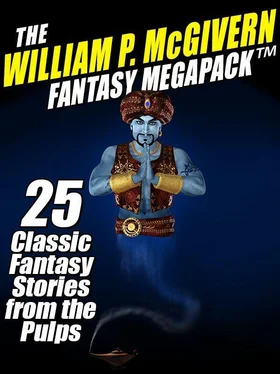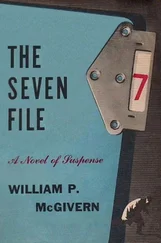What Colegrave, for all his cleverness, didn’t realize, was that his own subconscious mind would be shattered in the electric chair. When he accomplished the physical cleavage between his dual personality, his own subconscious intellect activated the body of his secondary nature. Thus when the electric current shot through the body of the mayor and the district attorney’s assassin, it was the mind of Colegrave that was destroyed by the bolt.
The presence of Nazi paratroop panzer units, even in South American jungle territory, might be closer to actuality than mere possibility. Certain it is that the Axis powers interested in South American control would stop at nothing to gain that objective. And equally certain, in the terms of practical military feasability, is the fact that plane carriers, operating along the vast coastal sectors of South America, could approach close enough to jungle shores to send troops with equipment over the jungle, dropping them at locations prearranged with fifth columnists.
Scarcely a day passes in Washington military and state department circles, that there are not clouded rumors of actual filtrations in various similarly situated sectors in many of the neutral nations. One military expert recently hinted that Jap divisions were thus landed in some of the Luzon sectors as early as five days before December 7th.
Stories have also come out of the deeper Mexican regions, hinting that entire paratroop units have been discovered lurking in desolate jungle and mountain areas, waiting for striking orders. These rumors, fortunately, have added that alert Mexican scout patrols have swiftly “mopped up” such units, adding to the fantastic status of the modern hidden lightning warfare developed by the European Mad Dog.
Buried deep in the fragmentary records of ancient Inca legends, is the often referred to story of the once splendid city of Sacha. Ruled by Queen Remura, who professed to be the daughter of an incredibly huge snake — after which the city was named — the ancient Inca metropolis was devastated by Spanish Conquistadors in a sudden and savage raid. Most of the citizenry were supposed to have been slain; all of the city was left in smoking ruin. The snake god Sacha, and his daughter, Queen Remura, however, were supposed to have escaped into the jungle. And it was while the Spaniards were still terrifying the smaller villages outside the city that Queen Remura returned, astride the great snake Sacha, rallying the remaining Incans, and slaying the despoilers to the last man.
C.H. Barrington, in his two volume treatise, “Ancient Inca, Its Legends and Civilisations,” said of this particular story around the snake god legend, “True it is that the Spaniards ravaged these particular coastal regions. And also true, is the fact that the crumbling wreck of a Spanish galleon was found shattered on the shores of this region some seventy-five years after the incident is supposed to have transpired. There were no bleached bones of the Spanish crew, as is generally the case, in the waters near the beached and rotting hulk to indicate that Conquistadors had been aboard when it was washed ashore. It’s crew, whatever happened to it, undoubtedly perished somewhere in the jungle during a raiding foray. It is not beyond reason to suppose that the crew fell victims of the surviving members of the devastated city of Sacha.”
And about the legend itself, Barrington adds, “There is evidence that some primeval monsters, tremendous snakes of the size attributed to Sacha, were in existence in the Peruvian jungles at the time this ancient Inca city was in its glory. And even as late as 1931, rumors have come from the little explored sectors of the jungle to the effect that a giant snake prowled the ruins of the little known city, always accompanied by a strangely beautiful girl.”
As to the native attitude toward the legend, Barrington concludes, “Among the more superstitious, it is still the belief that Sacha guards the fate of Peru with his daughter, always ready to thwart another despoiling of the proud nation.”
Legend of Sacha, the snake god, and his daughter.
Irish folklore is full of beliefs about the “little people,” both good and bad. Perhaps the most famous of them all are the leprechauns, who are said to be invisible, except to true Irishmen, and only to them on certain occasions. They are, insist the Irish, the “voice” we call conscience.
See “Tink Takes a Hand,” October ’41 Fantastic Adventures .
In this story, Tink and Nastee make a wager, selecting a bystander, and proceed to discover which of them is most capable — Tink in making the victim happy; Nastee in making him miserable. Tink finally won the bet by locking Nastee in a wall safe, where Nastee had gone to steal a jewel in a rather underhanded trick.
Of the many legends that abound in Irish mythology, one of the most charming is the folktale of the little people who are believed to be spirit or soul of music. These creatures, usually feminine in gender, are reputedly embodied in all great works of music, and it is their presence that lends magnificence to the compositions.
Astrology is not regarded generally as a true science, but as a pseudo science. Many people believe the stars do have an influence on events, and science itself does not deny that this may be the case. Certainly powerful radiations are emanated by all super-heated bodies, such as the stars are, and conceivably, they may effect our bodies and minds, and in that manner, events. However, cold bodies, like the planets, on which astrology is largely based, cannot affect us that way, and the powers attributed to them are largely mythical, and not to be confused with the science of astronomy.












